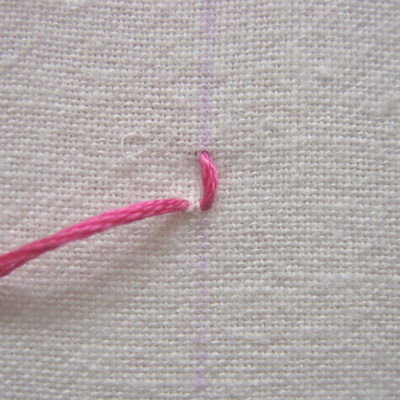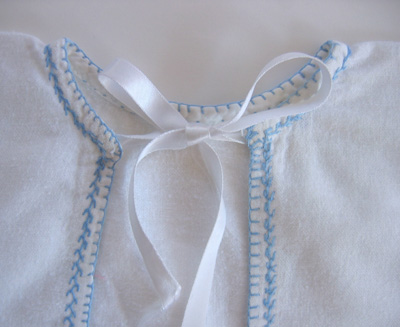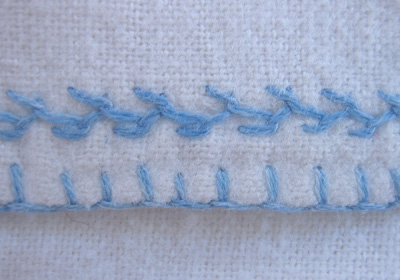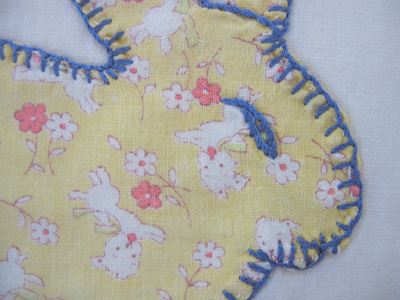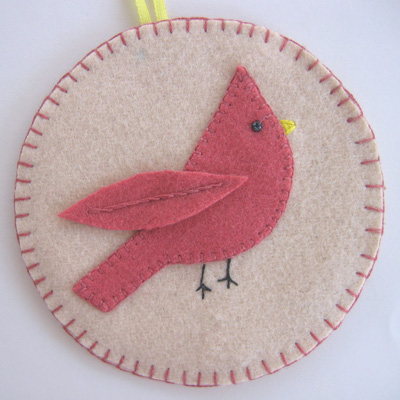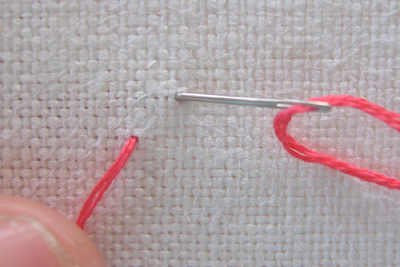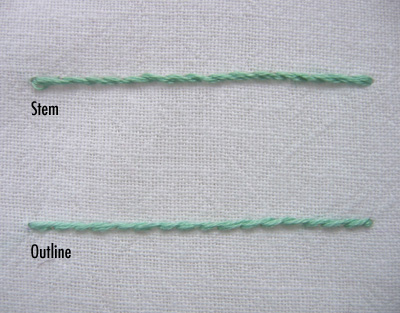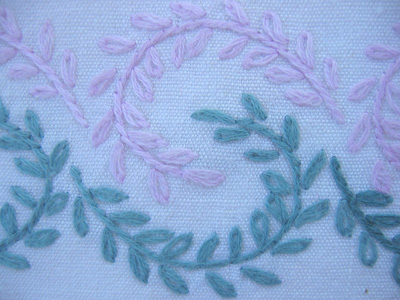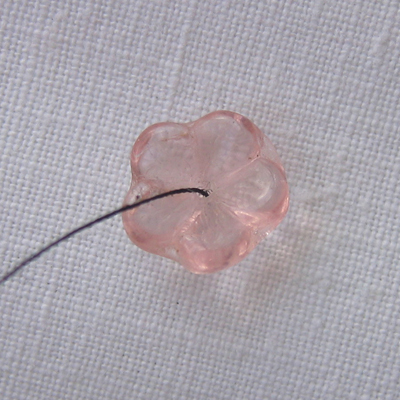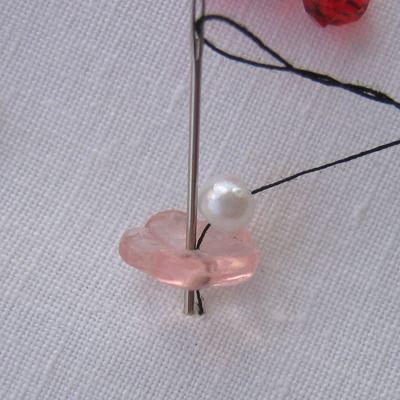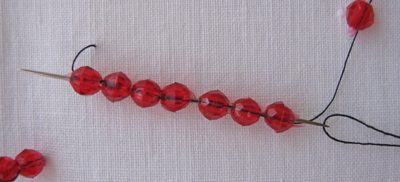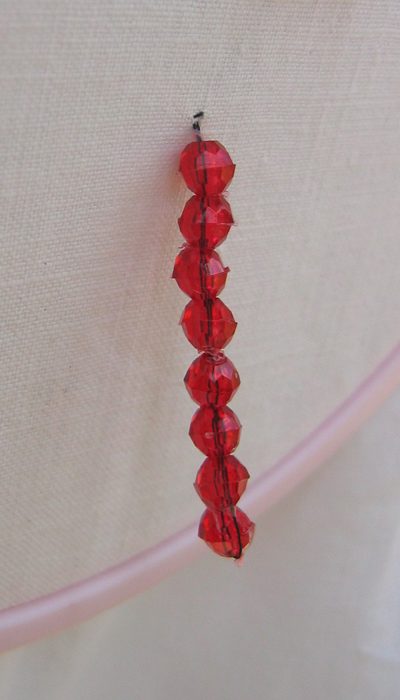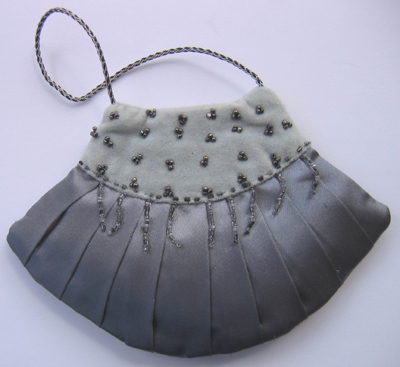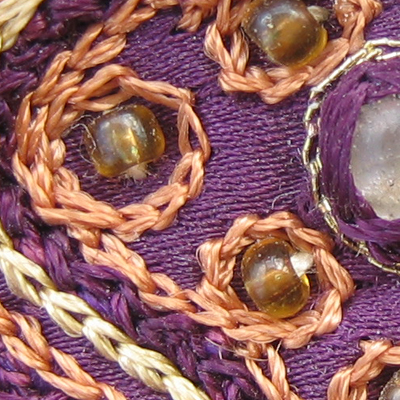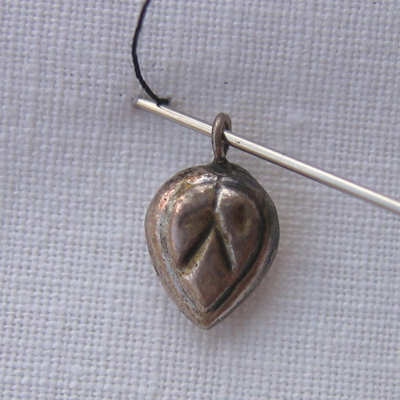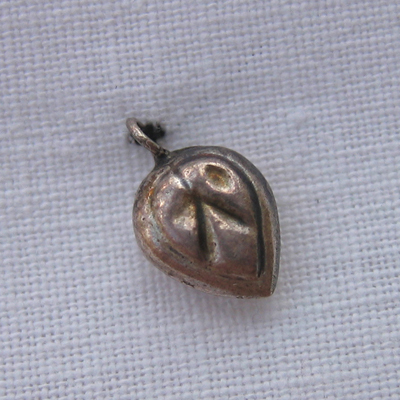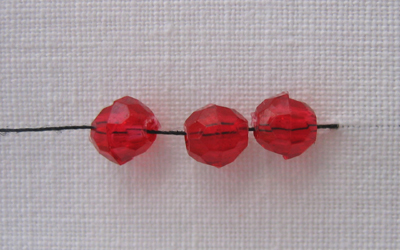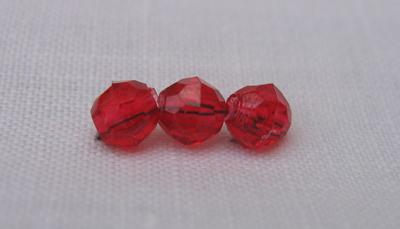Embroidery looks great all by itself, but sometimes you want a little extra something. Using beads is a great way to add texture and sparkle. Some of you know that I collect decorative purses—mostly vintage silver mesh and art deco beaded ones—but I also have a few more modern ones that use beads decoratively. Here are a few examples.
Anthropologie gray satin pleated purse with silvery beads.
Chinese drawstring purse with chain stitch embroidery and beads.
Now, for the how-to. You'll want to use thread (embroidery floss is fine, too) that is the same color as the beads or the same color as your fabric. I'm not doing that here because I want you to be able to see the stitches clearly in the pictures. And test first to make sure your needle is thin enough to pass through the bead opening.
Start by making a small knot at one end of your thread, or work several small stitches on top of one another on the back side of your fabric. Bring your needle to the right side and pick up a bead. Slide it down until it rests on the fabric surface.
Bring your needle to the back a short distance away—with your spacing equal to or slightly less than the width or height of the bead.
If you're sewing one bead, that's it. Knot or weave your thread in on the back and you're done.
For more beads (a cluster of three like the gray purse shown above, or a sprinkling over your fabric surface) just keep going, but make sure you don't leave too much space between your first and next bead—you don't want long threads on the back. And it's probably a good idea if the beads are spaced apart to take an extra stitch (or two) through the bead hole.
Use this same technique to attach charms or other items that have a ring or loop at the top.
You can also make a short row by threading several beads onto your thread and tacking it down at the end.
This post is already pretty long so I'll continue in a second part and show how to attach sequins (or other objects that have a single hole) and also how to make fringe—like on that gray purse shown above.
What got me thinking about this subject was a book I found at the library called Fashion Bead Embroidery by Natalie Giltsoff that had some great (although dated—it was published in 1971) ideas, including beaded bags, fabric-covered buttons, gloves, shoes, and dress necklines. There are tons of more modern books, too—just type in bead embroidery at Amazon and you'll find more than 600 of them! If anyone has a favorite resource, please share in the comments.
